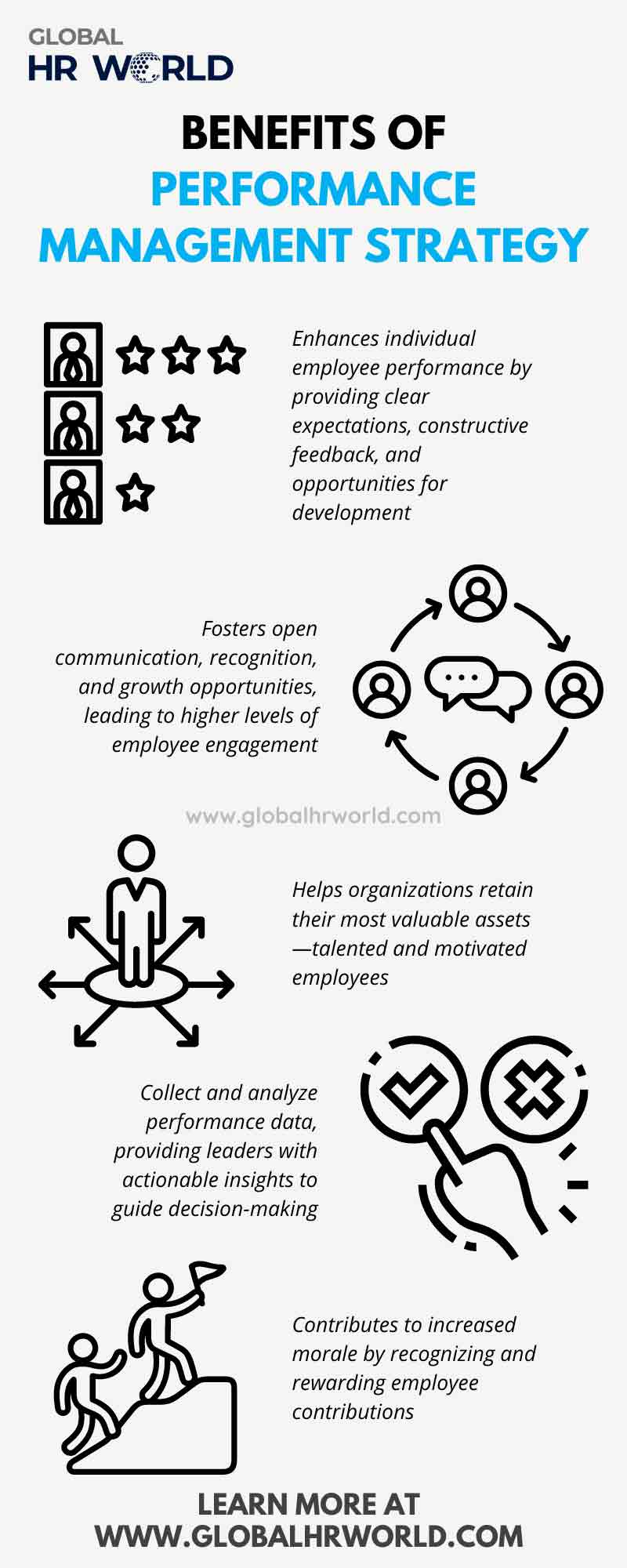Performance management is an integrated method for an organization to achieve its goals and objectives. It is a process that leaders/managers/HR professionals can use to maximize the performance of their workforce. In order to do so, you need a performance management strategy. An effective performance management strategy measures, motivates and develops the performance of employees to achieve the big-picture goals.
To learn more, keep reading!
Why is performance management strategy important?
Performance management is the guiding force behind business outcomes. With an effective performance management strategy, you can support employee goals. Without performance management strategies, expectations/goals are less clear, and employee engagement decreases, making employees lose their work motivation. A vast majority of HR professionals are working to fix their performance management strategies. While organizations can address poor employee performance results by reinventing performance management techniques, they have been routinely disappointed. That’s why developing the right performance management strategies is the ultimate key to retaining top talent and driving success.
Who needs a performance management strategy?
- Managers who are the power users of the system
- Employees who work with their managers to define employee goals
- HR professionals who define the HR processes and systems that support the performance management cycle
Performance management strategy
A few performance management strategies:
1 – Align objectives with organizational strategy
Setting clear, outlined objectives is the first step to effective performance management. Without clear objectives, you can’t measure whether your employees are reaching or exceeding their goals. Therefore, you need to be transparent and communicate the “why” behind your objectives. This helps employees understand their contribution in the bigger scheme of things.
2 – Set, track, and check in on organizational goals
HR professionals and employees should work together to set clear and aligned goals. Leaders need to define key results and establish deadlines to help employees stay on track. Check-in on goal progress with continuous communication with your employees to uncover what is going well and what isn’t. Individual deliverables should be developed according to the SMART goals: Specific, Measurable, Achievable, Realistic, and Time-bound. With this in place, leaders can help support and train employees to achieve success.
3 – Ensure clear communication
Successful performance management depends on the increased engagement and involvement of all employees. Clear communication is one of the effective performance management strategies. As a member of the management team, you need to be clear about what your performance management strategy is trying to achieve, how it will operate, how goals will be set, what criteria will be used for assessing performance, and whether compensation is applied. A culture of open communication in the organization will enable management to stay agile and productive.
4 – Create a culture of feedback
Constructive feedback gives employees the chance to learn, grow, and improve their performance with. Let employees see what they are doing right and where they are falling short to grow trust and performance. An effective feedback system will provide a platform for transparent, 180, 360, anonymous, and attributed feedback. This helps team leaders gain insight into the next steps for improvement. As your employees evolve, their productivity increases to achieve outcomes more consistently. One-on-ones should also be held at least monthly for team leads and employees to stay on track. When sitting down with employees, you should address the following:
- Clarify organizational and individual goals and objectives
- Discuss achievements
- Discuss possible areas of improvement
- Review previous objectives
- Determine future objectives in collaboration with employee
- Offer opportunities for career growth
- Give the employee time to ask questions and concerns
With the information, then, you can understand what is going well (or not) to make changes and keep employee engagement high and performance up to par.
5 – Recognize the big and small achievements
Employees need recognition for efforts—big or small. This contributes to team and organizational success. When employees are recognized for their work, they are more likely to continue that behavior in the future. You can build a social recognition platform that communicates your employees’ success to the entire organization. This helps in increasing employee performance by highlighting their worth to the organization and helping them feel more appreciated.
6 – Make continuous learning a priority
Your performance management strategy should also include employee development initiatives. To create a workforce of top talent and provide continuous learning and growth opportunities. A continuous learning program is a workplace culture that encourages employees to prioritize ongoing learning and development. Continuous learning can happen through different formats, including
- formal training courses
- informal learning
- online training and webinars
- cross-training
- shadowing peers
- training programs
- one-on-one or group coaching
- casual interactions
Embracing a continuous learning and development mindset fosters personal and professional growth in individuals. It allows employees to acquire new knowledge/skills, stay relevant in their market, and enhance their critical-thinking abilities.
7 – Use the help of technology
Technology can help organizations keep pace with the ever-changing landscape of skills and knowledge. A tech-based performance management system can track the performance of employees and even managers in a consistent and measurable manner. The performance management system relies on a combination of technologies and methodologies to ensure employees across the organization are aligned with – and are contributing to – the strategic goals of the business. Using an effective performance management system has a range of advantages,
- Provide effective performance results
- Aid in the growth of training and employee development programs
- Help set organizational goals
- Monitor employee performance
- Reward top performers
- Drive more feedback from employees
- Encourage positive attitudes toward organizational goals
The digitization of performance management gives more precise data and positively influences strategic development. Technology-enabled performance management strategies simplify the evaluation process and enhance employee engagement for amplified organizational success.
Infographic

Knowledge Check!
Frequently Asked Questions (FAQs)
What is performance management?
Performance management is an integrated method for an organization to achieve its goals and objectives. It is a process that leaders/managers/HR professionals can use to maximize the performance of their workforce.
What types of organizations should implement a performance management strategy?
Any organization with a base of employees will benefit from an effective performance management strategy. It provides the organization with an effective, repeatable model that can be used to the strategic objectives of the business.



